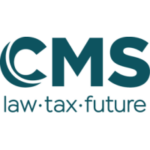-
Does your jurisdiction have a class action or collective redress mechanism? If so, please describe the mechanism and outline the principal sources of law and regulation and its overarching impact on the conduct of class actions in your jurisdiction.
The Danish jurisdiction has a mechanism for class actions, which is regulated in Chapter 23 a of the Danish Administration of Justice Act and supplemented by additional rules in the Act on Access to Class Actions for the Protection of the Collective Interests of Consumers (hereinafter referred to as the: “Implementation Act”).
The effect of the Danish regulation is that class actions is a separate form of legal procedure or litigation in Danish law, which is processed under the rules of Chapter 23 a of the Administration of Justice Act. The legal procedure entails that if a group of individuals (claimants) have several similar claims that involve the same legal and factual issues, they can decide to pursue the case jointly instead of filing individual lawsuits. It should be noted that the individual members of the group are not considered to be parties to the lawsuit.
However, if similar claims are to be consolidated into one case, certain strict conditions must be met. Chapter 23 a of the Administration of Justice Act consists of Sections 254 a-k. Section 254 b sets out the basic criteria for when a class action can be brought which includes, among others, that the claims must be uniform, that there must be jurisdiction for all claims in Denmark, and that the class action must be considered the best method to handle the claims. Class actions are conducted by a group representative appointed by the court. The group representative may be a member of the group, an association, a private institution or a public authority authorised by law. The group representative must be able to represent the interests of the class action during the proceedings.
Subsequently, the legislation on class actions has been supplemented by EU Directive 2020/1828 on collective redress regime, which aims to protect the collective interests of consumers. This Directive has been implemented within the Danish law in the Implementation Act, which came into force on 25 June, 2023. The Implementation Act sets out procedures on how consumers can join a class action and how they should be informed about the case. The Act applies to class actions arising from a trader’s breach of EU consumer protection rules, including the provisions of Annex I to EU Directive 2020/1828, cf. Section 1, subsection 1 of the Implementation Act. This covers a wide range of applications, including for example data protection rules, unfair consumer contracts and commercial practices etc. Thus, the Implementation Act extends the possibility for consumers to bring class actions against traders by allowing cross-border class actions.
In principle, it should be noted that if a class action is covered by both acts, there is a free choice as to which of the Acts the class action is brought under.
-
What is the history of the development of the class actions/collective redress mechanism and its policy basis in your jurisdiction?
The mechanism was introduced with effect from 1 January, 2008, although there were already some mechanisms in place prior to that date that allowed several pending lawsuits to be dealt with collectively.
In terms of its policy basis, the mechanism introduced in 2008 aimed to improve procedural efficiency by grouping claims of a similar nature and facilitating access to collective litigation for claims that would otherwise be infeasible to pursue individually. The political debate on class actions has been characterised by concerns about due process protection and legal ethics, which have influenced the design of the rules. This is particularly evident in the strict requirement of uniformity and class action as the best procedural option, which have constrained the ambitious introduction of mechanisms, cf. see the answer to question 17.
In 2023, specific rules for consumer cases were introduced into Danish law, marking a new phase in the development of class actions with a focus on protecting the collective interests of consumers.
-
What is the frequency of class actions brought in your jurisdiction, in terms of number of cases over the years and/or comparison to other types of litigation?
Historically, class actions have not been used widespread in Denmark. This is mainly due to strict requirements that needs to be met in order to make use of the class action mechanisms, such as the requirement to provide security for the legal costs of a class action.
In the period from 2008 to 2023, 74 class actions were filed with the Danish district courts, of which 64 were settled.
As a result of the EU Directive 2020/1828, it is expected that more cases will be filed as class actions in the future. This is partly because the Implementation Act makes it much easier for consumers to bring national class actions due to the expanded basis for representative actions for redress, and partly because of the option to apply the two different sets of rules under the Administration of Justice Act and the rules under the Implementation Act. The possibility of third-party funding also contributed to this. In addition, consumers from different EU Member States can more easily bring cross-border class actions in Denmark and/or in other EU Member States. These expectations apply not only in Denmark, but within the entire EU.
-
Are there certain courts or types of claims that are most prevalent (for example competition vs commercial litigation generally)?
With regard to class actions in Danish jurisdiction, there is no particular type of claim or court that is most prevalent. Class actions may be brought in any court that has territorial and subject-matter jurisdiction over at least one of the claims.
In Denmark, class actions are dealt with by the civil courts. The civil courts consist of the Supreme Court, the High Courts including the Maritime and Commercial High Court, the district courts and the Danish Registration Court. This is stated in Section 1, subsections 1 and 2, of the Administration of Justice Act.
-
What is the definition of 'class action' or 'collective redress' relevant to your jurisdiction?
The definition of class actions is set out in both the Danish Administration of Justice Act and the Implementation Act.
In accordance with Section 254 a of the Danish Administration of Justice Act, the definition of a class action is as follows: “Similar claims brought on behalf of several persons may be dealt with in a class action in accordance with the provisions of this chapter”. This means that claims of several persons can be consolidated if they meet certain conditions, including uniformity and procedural economy.
The Implementing Act defines a class action in Section 2(6) as “an action for the protection of the collective interests of consumers brought by an authorised authority or organisation as an injured party on behalf of consumers for injunctive or prohibitory relief or for redress, or for both final injunctive relief and redress”.
This definition highlights that class actions can be brought by a representative on behalf of a group of consumers and that the action can seek both interim and final injunctions and redress.
-
What are the general 'triggers' for commencement of a class action or collective redress in your jurisdiction from a factual perspective?
The general “triggers” for a class action in Danish jurisdiction are situations where there are similar claims arising from the same legal basis and factual issues. Typical triggers are consumer, bankruptcy and securities claims.
-
How do class actions or collective redress proceedings typically interact with regulatory enforcement findings? e.g. competition or financial regulators?
The class action that we have seen so far in Denmark are often between a group of individuals, often consumers, against a non-governmental company and/or directors of that company as defendants. In these class actions, the group often seek compensation from the company and/or directors, often on the basis of either strict liability or fault-based liability.
As a result, we haven’t yet seen class actions interacting with regulatory enforcement findings.
-
What types of conduct and causes of action can be relied upon as the basis for a class action or collective redress mechanism?
The types of conduct and causes of action on which class actions can be relied upon as the basis for such suits, are the same types of conduct and causes of action on which all other civil court cases can be relied upon. For instance, the conduct can be based on a strict liability or a fault-based liability.
-
Are there any limitations of types of claims that may be brought on a collective basis?
According to the provisions of Chapter 23 a of the Administration of Justice Act, all types of civil cases can be brought as class actions.
However, pursuant to Section 254 a, subsection 2, of the Administration of Justice Act, there are limitations on the types of claims that can be brought as class actions. The limitations relate to cases concerning criminal law, family law, parental rights and responsibilities, civil detention, guardianship, adoption, and cases brought before the United Patent Court.
In relation to the Implementation Act – and as mentioned in question 1 above – these rules cover class actions concerning breaches by traders of the provisions in Annex I to EU Directive 2020/1828, cf. Section 1, subsection 1, of the Implementation Act. Annex I contains 66 consumer-oriented provisions, e.g. on misleading advertising, consumer credit and package tours.
Unless otherwise provided in the Implementation Act, Chapters 21-23 and 24-38 of the Administrative Justice Act shall apply to the court’s handling of class actions covered by the Act, cf. section 1, subsection 2, of the Implementation Act.
-
Who may bring class action or collective redress proceeding? (e.g. qualified entities, consumers etc)
Pursuant to Danish law, a group representative must be appointed and the class action must be brought to court before the court will allow a class action to proceed. In Denmark, a group representative is usually a legal entity established for the sole purpose of pursuing a particular class action claim.
According to Section 254 c, subsection 1, of the Administration of Justice Act, a group representative must be:
- A regular member of the group
- A private organisation, where the purpose of the suit falls within the purpose of the organisation; or
- A public authority authorised by law to act as the representative of the group
With regard to point number 3, the Danish Consumer Ombudsman was the only public institution authorised by law to act as the group representative until the Implementation Act was introduced. The Act strengthens consumer protection by allowing more organisations and authorities representing consumer interests to bring new types of class actions against traders.
The group representative does not have to be appointed by the court under the Implementation Act. In addition, the authorities do not need to be authorised by law to act as group representatives, as both public authorities and organisations may apply to the Minister of Trade and Industry for authorisation, cf. Section 3, subsection 1, of the Implementation Act. The Competition and Consumer Authority submits a list of authorised representatives to the European Commission, which publishes the list, cf. Section 4, subsection 1, of the Implementation Act. This entails that each EU Member State must respect the approvals of public authorities and organisations granted by other EU Member States. Further, an approved authority or organisation in another Member State can take legal action against a party in Denmark, cf. section 7 of the Implementation Act.
According to Section 3, subsection 2 and 3, of the Implementation Act, several conditions must be met before an authorisation can approved. For example, the organisation must be non-profit-making, independent and have been active in the field of consumer protection for 12 months.
If an authority or organisation no longer fulfils the conditions, the Minister of Trade and Industry may revoke its approval, cf. Section 5, subsection 1, of the Implementation Act. At least every fifth year, the Minister of Trade and Industry shall review, whether the approved authorities and organisations still meet the conditions.
-
Are there any limits on the nationality or domicile of claimants in class actions or collective redress proceedings?
There are no general limits on the nationality of claimants in class actions in Danish jurisdiction. Claimants domiciled outside Denmark may participate in class actions if they meet the jurisdictional requirements or actively opt-in the case. Cross-border class actions can be brought by authorised public authorities and organisations and can include consumers from different EU Member States as long as the jurisdictional requirements are met. This underlines that nationality is not an obstacle to participation in class actions.
However, please see the answer to question 15 below.
-
Are there any limitations on size or type of class?
There are no specific legal restrictions on the size of class actions in Danish jurisdiction, but practical and procedural considerations may limit the number of group members. The court must ensure that notice is given to affected group members in an appropriate manner, and group members may be required to provide security for costs, which may limit the size of the class.
As to the type of the claims, class actions can only be brought for claims that meet certain conditions, such as protecting the collective interests of group members and being the most beneficial method to deal with the claims. Class actions are ancillary to other forms of litigation and the claims must be similar in essence and arise from the same legal and factual issues.
Overall, there are both legal and practical limitations on the size and type of class actions, but these limitations are primarily based on procedural and practical considerations rather than specific legal rules.
-
Are there any requirements or prohibitions in sourcing this class?
Yes, please see the answers to questions 1, 10 and 17.
-
Which courts deal with class actions or collective redress proceedings?
Please see the answer to question 4 above.
-
Are there any jurisdictional obstacles to class actions or collective redress proceedings?
With regard to the jurisdictional obstacles to class actions in Denmark, international claimants can participate in class actions in Denmark, as the class action system is not limited to Danish citizens only. However certain requirements set out in Section 254 b, subsection 1, of the Administration of Justice Act, and Section 12 of the Implementation Act, must be met.
In particular, the requirements set out in Section 254 b, subsection 2, in the Administration of Justice Act, and in Section 7, subsection 1, and Section 8, subsection 1, of the Implementation Act, are important in this respect. These requirements stipulate that in order to participate in a Danish class action, the legal venue for all claims included in a class action must be in Denmark.
Therefore, despite the possibility for international claimants to participate, the requirement that the legal venue must be in Denmark constitutes a jurisdictional obstacle to the proceedings.
-
Does your jurisdiction adopt an “opt in” or “opt out” mechanism?
Both opt-in and opt-out class actions are permitted under Danish law.
According to the Administration of Justice Act, the court decides whether a particular class action should be opt-in or opt-out. However, the opt-in model is the starting point, but if the court considers the opt-out model to be more beneficial to a particular class action, the opt-out model will be used as a narrow exception.
If the class action is based on an opt-out model, the group representative must be a public organisation. In this case, the court will set a deadline for potential group members to opt out of the action, cf. Section 254 e, subsection 8, of the Administration of Justice Act.
If the class action is based on an opt-in model, it is binding on a group member to opt in. Therefore, all potential group members must be informed of the legal consequences of opting in to a particular class action. Consequently, group members cannot bring individual lawsuits in respect of their claims within the scope of the class action. Group members must be aware that the opt-in must be made before a certain deadline, cf. Section 254 e, subsection 6, of the Administration of Justice Act, and Section 16, subsection 2, of the Implementation Act. Furthermore, according to the Implementation Act, consumers may also opt in to class actions brought in other Member States if they are affected by the class action.
In relation to the Implementation Act, class actions can be brought with a claim for either, cf. Section 11, subsection 2:
- Interim injunction or prohibitory injunction
- Mandatory injunction or prohibitory injunction or redress
If the class action involves an interim, prohibitory or mandatory injunction, it is not a condition for a decision that the consumers have actually opted in to the suit, cf. Section 13, subsection 3, of the Implementation Act. If the class action involves a redress, the action can only be based on an opt-in model, cf. Section 16, subsection 1, of the Implementation Act.
In addition, it follows from Section 254 e, subsection 7, of the Administration of Justice Act that the court may decide that opt-in is conditional on the group members providing security for the legal costs of the case if the court finds in favour of the defendant. The amount of the security is determined by the court, and if the group loses the case, the liability of the group members is limited to that amount, cf. Section 254 f, subsection 3, of the Administration of Justice Act. This applies unless, for example, the group members have legal aid insurance or fulfil the conditions for free legal aid.
On the contrary, in opt-out class actions, the court cannot require the members of the group to provide security for the legal costs of the case.
With regard to the requirement for security for legal costs, the Danish Supreme Court, in its decision in UfR 2012.2938 H, lowered the security for such legal costs.. The court stated that the amount of the security must be determined at the discretion of the court, taking into account the value, scope and nature of the case and the work involved.
However, the requirement to provide security for legal costs may be waived for individual group members. This presupposes that the group members have legal expenses insurance or other insurance covering the costs of the case, or that the class action meets the conditions for obtaining free legal aid. It should be noted that the group representative can apply for free legal aid on behalf of the class action, which means that the group members themselves cannot apply for free legal aid.
-
What is required (i.e. procedural formalities) in order to start a class action or collective redress claim?
The procedure for bringing a class action before the court is identical to any other court case, so a class action begins with the submission of a Statement of Claim, see Section 348, cf. Section 254 d, subsection 1, of the Administration of Justice Act. The only difference in class actions is that the claimant must request in the Statement of Claim that the court deal with the claim in accordance with the rules on class actions.
In addition to the request, it follows from Section 254 d, subsection 1, of the Administration of Justice Act, that the Statement of Claim must contain:
- A description of the class action group
- Information on how the members of the group can be identified and informed about the lawsuit; and
- A suggestion of who can and wants to be a representative of the group
If the Statement of Claim does not comply with these requirements of Section 254 d, subsection 1, it is not suitable to serve as a basis for the proceedings and the court will dismiss the case. However, before dismissing the case, the court may set a deadline for the claimant to remedy the deficiencies in the Statement of Claim, cf. Section 348, subsection 2, of the Administration of Justice Act.
If the class action is brought under the Implementation Act, the Statement of Claim must contain the following, in addition to the requirements under Section 348 of the Administrative Justice Act, see Section 11 of the Implementation Act:
- A statement that the case is brought in accordance with the provisions of this Act
- Information on the consumers affected by the class action
- Any other information necessary to enable the court to determine whether it has jurisdiction and to choose the applicable law
Procedurally, once the group has been identified, there is no difference between bringing forth a “normal” lawsuit and bringing forth a class action. The Statement of Claim is served on the opponent of the class action, and if the opponent objects to the case being brought as a class action, the court must decide whether the case can be brought as a class action before the case can proceed.
A class action must meet the criteria set out in Section 254 b, subsection 1, of the Administration of Justice Act, before the court will allow the suit to proceed:
- The claims must be similar in essence
- The legal venue for all claims must be in Denmark
- The court must have jurisdiction over at least one of the claims
- The court must have subject-matter jurisdiction over one of the claims
- Class action must be the best processual option
- The group members can be identified and are notified about the class action
- A group representative can be appointed
According to Section 12 of the Implementation Act, the following criteria must be met for class actions to be brought:
- The claims must be similar in essence
- Class action must be the best procedural option
- The group members can be identified and are notified about the class action
These criteria implement Article 7(4) of EU Directive 2020/1828. However, the criteria in Section 12 partly correspond to the criteria in Section 254 b, subsection 1, of the Administration of Justice Act and Section 12 must be interpreted in accordance with the corresponding criteria in the Administration of Justice Act.
These criteria are relatively strict. The criterion that a class action must be the best procedural option to address a particular claim means that the court will only issue a group certificate if no other option is better suited to dealing with the claim. This criterion is therefore the most difficult to meet.
If the court does not allow the class action to proceed, the group members must bring their claims individually.
This was the case in the decision UfR 2018.3361 Ø, in which the association “Class Action against AP Pension” brought a class action against the insurer AP Pension Livsforsikringsselskab. The High Court dismissed the class action as the conditions in Section 254 b, subsection 1, (1) and (5), were not met. The High Court considered that the class action was not sufficiently similar in essence as the class action included both employed and retired individuals as group members, and the individual members did not share the same factual circumstances.
-
What other mandatory procedural requirements apply to these types of matters?
Please see the answer to question 17 above.
-
Are normal civil procedure rules applied to these proceedings or a special set of rules adopted for this purpose?
Denmark uses a hybrid model in which the basis for class action proceedings is the ordinary civil procedure as set out in the Danish Administration of Justice Act, but with specific additional provisions that apply only to the handling of class actions.
-
How long do these cases typically run for?
It is difficult to generally estimate the duration of class actions in Denmark, but cases typically run from 2 to 8 years, depending on a number of factors, including the complexity of the case, the size of the class, appeals to higher courts, and court scheduling times.
-
What remedies are available to claimants in class action or collective redress proceedings?
The remedies available to claimants in class action are the same as in any other civil court case. The remedies may therefore be declaratory relief, damages or restitution.
According to Section 15, subsection 1, of the Implementation Act, in connection with a class action for redress, the court may decide that the trader must give the registered consumers access to certain remedies.
Depending on the circumstances, these remedies may include:
- Compensation
- Remedy
- Replacement
- Pro rata reduction
- Termination
- Reimbursement
However, these remedies must be held up against Section 338 of the Administration of Justice Act, according to which the court cannot award consumers more than the approved authority or organisation has claimed.
-
Are punitive or exemplary damages available for class actions or collective redress proceedings?
Neither punitive nor exemplary damages are available in class actions under Danish law.
However, a fine may be imposed on any individual who intentionally contravenes an injunction or prohibition, cf. Section 23, subsection 1, of the Implementation Act. In addition, pursuant to Section 23, subsection 4, of the Implementation Act, companies, including legal persons, are subject to criminal liability in accordance with the provisions of Chapter 5 of the Danish Criminal Code.
-
Is a judge or multiple judges assigned to these cases?
In general, a civil trial is heard by a single judge. In some cases, however, a trial may be heard by three judges, for example if the case is of fundamental importance. These principles are derived from Section 12, subsections 1 and 3, of the Administration of Justice Act.
Specialist judges may be appointed as assessors in special circumstances. This applies in particular to cases concerning maritime law, cf. Section 20, subsection 1 of the Administration of Justice Act.
-
Are class actions or collective redress proceedings subject to juries? If so, what is the role of juries?
As civil cases, class actions are not subject to juries under Danish law.
-
What is the measure of damages for class actions or collective redress proceedings?
The measure of the damages in class actions is based on the actual loss suffered by the group members of the class action, who are entitled to recover the full and actual loss suffered by each of them, provided this can be proved during the proceedings. The claimant bears the burden of proving actual damages.
For example, in a class action against a pharmaceutical company for selling defective drugs, damages may be calculated on the basis of the cost of purchasing the drugs and the additional medical expenses incurred as a result of using the drugs.
-
Is there any mechanism for the collective settlement of class actions or collective redress proceedings?
The group representative has no authority to independently settle the claims of the group members, either in court or out of court. Pursuant to Section 254 h of the Administration of Justice Act, the group representative may not enter into a settlement with respect to the claims included in the class action until the court has approved the settlement. The court will approve the settlement unless the settlement discriminates against the members of the class action or the settlement is obviously unfair.
In accordance with Section 19 of the Implementation Act, the approved authority or organisation, together with the trader, may submit to the court a proposal for the settlement of the claim in favour of the registered consumers. In addition, the court may – at any time during the proceedings – invite the parties to enter into a settlement. A settlement must be approved by the court. If the court approves the settlement, it becomes binding on the parties to the case and the registered consumers.
In addition, the general rules on the settlement of civil cases apply to class action.
There are also a number of pre-litigation out-of-court dispute resolution mechanisms available. These mechanisms are not available for class actions, but aim to settle a large number of small individual claims before they develop into a court case. The Consumer Ombudsman can take the question to court on behalf of the consumer or group of consumers if the defendant does not comply with the alternative dispute resolution ruling (the ADR).
-
Is there any judicial oversight for settlements of class actions or collective redress mechanisms?
Please see the answer to question 26 above.
-
What are the top three emerging business risks that are the focus of class action or collective redress litigation?
With regard to the development of Danish class actions, there has been a recent increase in the use of the system, particularly in relation to securities claims. As a result, the risk of being confronted with a securities class action has increased. There are a number of examples from Danish case law that illustrate this development:
The OW Bunker case from the High Court is one of them. In this case, a number of small investors opted-in on a class action to sue the former executive board for misrepresentation and non-disclosure in a prospectus published prior to the listing of OW Bunker. The company went bankrupt less than a year after the listing. The class action was certified as the High Court found that a class action was the best way to deal with the claims.
The class action against the healthcare company Novo Nordisk is another case that illustrates the trend in securities claims. This class action was brought by a number of shareholders claiming that Novo Nordisk had made misleading statements and failed to make adequate disclosures regarding its sales of insulin products in the US. The original claim amounted to a total of approximately DKK 11 billion. The case was settled early 2022. The settlement did not involve any admission of liability, wrongdoing or responsibility by Novo Nordisk.
The Danske Bank case also illustrates the trend in securities claims. This case involved several class actions, including one in which 300 investors sued the bank because their shares had lost value as a result of the bank’s money laundering practices.
However, recent developments indicates that the Danish class action rules are beginning to be used more widely for other type of cases.
An example is the class action against the Danish Ministry of Taxation and the Danish Broadcasting Corporation (DR). In this case, a group of licence fee payers claimed repayment of licence fee VAT that was – allegedly – had been levied illegally. The class action, which is an opt-in action, was allowed to proceed by the court and the group received free legal aid from the Danish government. The status of the case is that the Court of Justice of the European Union discussed a number of issues in March 2024, and on 12 September 2024, the Advocate-Generals of the Court of Justice of the European Union are expected to give a legal opinion in the case. The Court of Justice of the European Union will then give its judgment. The case will be referred to the Danish High Court for the final decision.
Finally, the wider use of the class action system is expected to develop in the coming years, as class action are likely to arise, for example, in relation to climate changes and due to the fact, that more Danish law firms are seeing class actions as a potential business area.
-
What trends in litigation are evident in the last three years in your jurisdiction in respect of class actions?
There has been a recent increase in the use of the Danish class action mechanism, cf. see question 3 above. This is partly due to the implementation of EU Directive 2020/1828, which has extended the scope for representative actions, the possibility of third-party funding and facilitated cross-border class actions within the EU.
Law firms and organisations are increasingly using online tools, portals and platforms to coordinate opt-in processes, notify group members and streamline claims registration. This has reduced administrative burdens and increased participation in class actions.
-
Where do you foresee the most significant legal development in the next 12 months in respect of collective redress and class actions?
The most significant legal developments in the area of class actions in Denmark in the next 12 months are expected to include:
- The first cases under the EU Directive 2020/1828 on collective redress regime where Danish courts will have to apply the new rules, which (probably) will set a precedent.
- An increased focus on third-party litigation funding, although this remains limited. There is a growing interest in this type of funding in general, but also to support class actions, particularly where claimants cannot afford to pursue prolonged litigation, but also generally to support cases of high-value or complexity.
- More ESG cases, as there is likely to be increased interest in pursuing class actions against companies that mislead consumers and businesses with sustainability claims, cf. see question 31 below.
-
Are class actions or collective redress proceedings being brought for ‘ESG’ matters? If so, how are those claims being framed?
There is a growing global trend towards ESG matters. Claims relating to corporate misconduct in relation to sustainability practices, violations of labour rights or issues of diversity and inclusion can potentially be brought under Danish law on class action.
In March 2024, the Danish High Court ruled on what has been described as the first greenwashing claim in Denmark. The case was brought by two associations against one of the largest meat producers in the EU. Based on this, as well as on the global trend towards the use of class actions on ESG-related matters, we expect to see more class actions in this area in Denmark, as well as more widespread across the EU.
-
Are there any proposals for the reform of class actions or collective redress proceedings? If so, what are those proposals?
There have been no new proposals to reform class actions since the implementation of the EU Directive 2020/1828 on collective redress regime.
Denmark: Class Actions
This country-specific Q&A provides an overview of Class Actions laws and regulations applicable in Denmark.
-
Does your jurisdiction have a class action or collective redress mechanism? If so, please describe the mechanism and outline the principal sources of law and regulation and its overarching impact on the conduct of class actions in your jurisdiction.
-
What is the history of the development of the class actions/collective redress mechanism and its policy basis in your jurisdiction?
-
What is the frequency of class actions brought in your jurisdiction, in terms of number of cases over the years and/or comparison to other types of litigation?
-
Are there certain courts or types of claims that are most prevalent (for example competition vs commercial litigation generally)?
-
What is the definition of 'class action' or 'collective redress' relevant to your jurisdiction?
-
What are the general 'triggers' for commencement of a class action or collective redress in your jurisdiction from a factual perspective?
-
How do class actions or collective redress proceedings typically interact with regulatory enforcement findings? e.g. competition or financial regulators?
-
What types of conduct and causes of action can be relied upon as the basis for a class action or collective redress mechanism?
-
Are there any limitations of types of claims that may be brought on a collective basis?
-
Who may bring class action or collective redress proceeding? (e.g. qualified entities, consumers etc)
-
Are there any limits on the nationality or domicile of claimants in class actions or collective redress proceedings?
-
Are there any limitations on size or type of class?
-
Are there any requirements or prohibitions in sourcing this class?
-
Which courts deal with class actions or collective redress proceedings?
-
Are there any jurisdictional obstacles to class actions or collective redress proceedings?
-
Does your jurisdiction adopt an “opt in” or “opt out” mechanism?
-
What is required (i.e. procedural formalities) in order to start a class action or collective redress claim?
-
What other mandatory procedural requirements apply to these types of matters?
-
Are normal civil procedure rules applied to these proceedings or a special set of rules adopted for this purpose?
-
How long do these cases typically run for?
-
What remedies are available to claimants in class action or collective redress proceedings?
-
Are punitive or exemplary damages available for class actions or collective redress proceedings?
-
Is a judge or multiple judges assigned to these cases?
-
Are class actions or collective redress proceedings subject to juries? If so, what is the role of juries?
-
What is the measure of damages for class actions or collective redress proceedings?
-
Is there any mechanism for the collective settlement of class actions or collective redress proceedings?
-
Is there any judicial oversight for settlements of class actions or collective redress mechanisms?
-
What are the top three emerging business risks that are the focus of class action or collective redress litigation?
-
What trends in litigation are evident in the last three years in your jurisdiction in respect of class actions?
-
Where do you foresee the most significant legal development in the next 12 months in respect of collective redress and class actions?
-
Are class actions or collective redress proceedings being brought for ‘ESG’ matters? If so, how are those claims being framed?
-
Are there any proposals for the reform of class actions or collective redress proceedings? If so, what are those proposals?





















